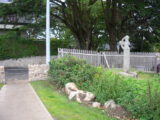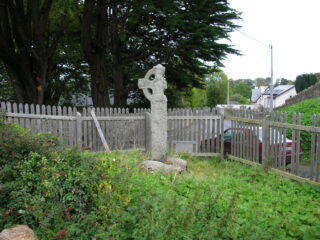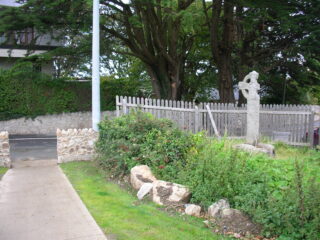Fógra
WARNING: It should be noted that these sites are unguided and a level of care and caution should be maintained during all stages of your visit. The Office Of Public Works (OPW) will not be held responsible for any damages, injuries, or losses that occur
Kilgobbin High Cross
Situated at the bottom of a slope opposite Kilgobbin Church, this High Cross dates from between the 10th and 12th century. One side of the ringed head is now missing, and was noted as missing in the 1837 Ordnance Survey, which commented ‘The cross-head has the figure of Christ carved onto both faces, the east face representing the Crucifixion while the west face possible represents the Risen Christ associated with the Last Judegement.’[1] The cross now sits in a circular base.
The cross was found in 1800 buried within the church graveyard when a new wall was being built. It was then placed in its present location. It is said that the cross was hidden during Cromwellian times. There are two different accounts as to the purpose of the cross, which are noted within the dúchas school collection: one account claims that it marked the graves of the Irish who died during the Battle of Clontarf, saying that Brian Boru stopped here on his way to Wexford.
Another account states that it marked the boundary of a bishop’s diocese.
The church dates to the early 1700s, and was built on an older church site.
Visit Historic Environment Viewer for more information on Kilgobbin High Cross
Protect our Past - Click here to read about the importance of protecting our country’s unique heritage sites
This national monument is protected in accordance with the National Monuments Acts 1930 to 2014
[1] Historic Environment Viewer: https://heritagedata.maps.arcgis.com/apps/webappviewer/index.html?id=0c9eb9575b544081b0d296436d8f60f8



